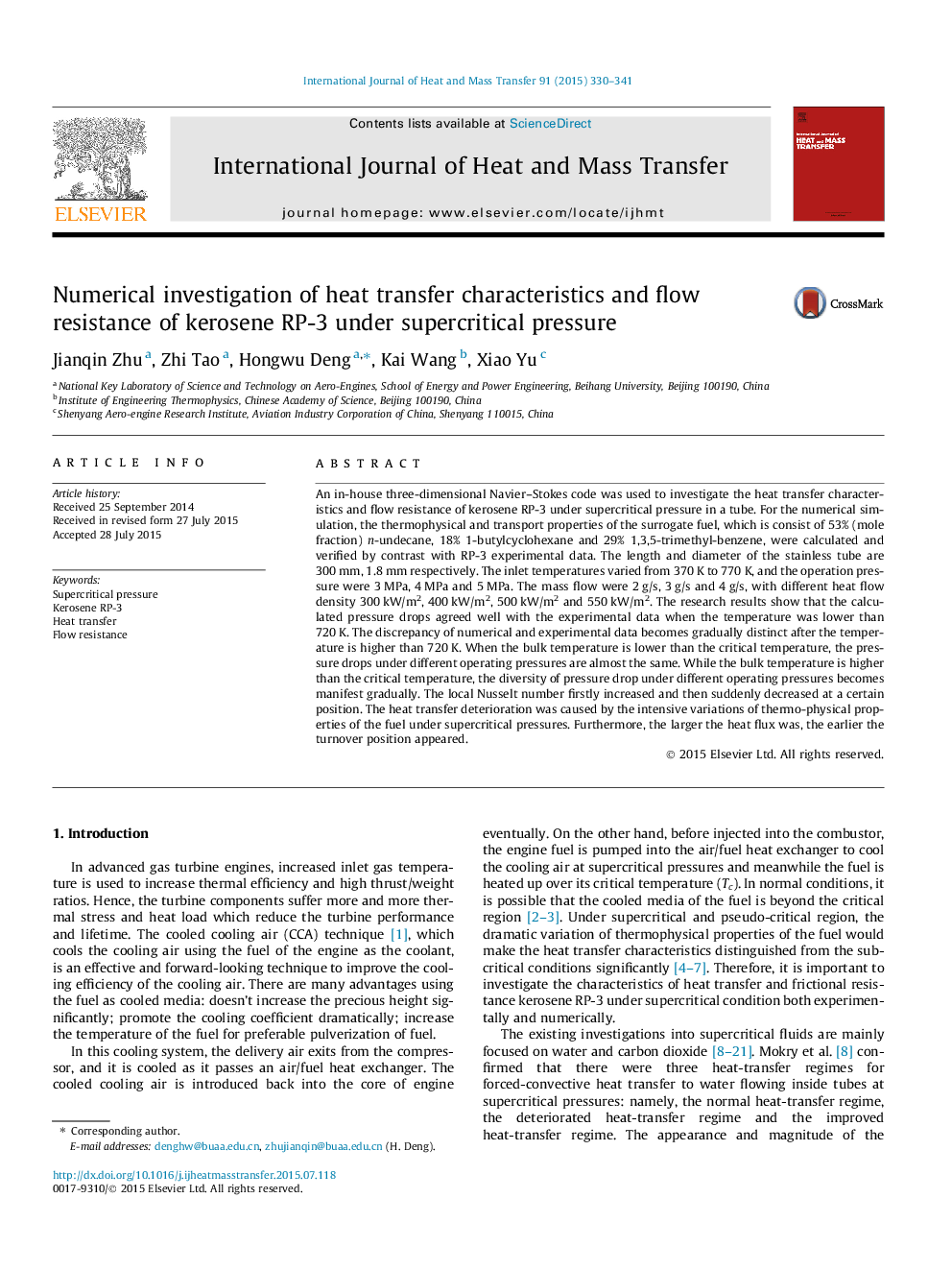| Article ID | Journal | Published Year | Pages | File Type |
|---|---|---|---|---|
| 7056179 | International Journal of Heat and Mass Transfer | 2015 | 12 Pages |
Abstract
An in-house three-dimensional Navier-Stokes code was used to investigate the heat transfer characteristics and flow resistance of kerosene RP-3 under supercritical pressure in a tube. For the numerical simulation, the thermophysical and transport properties of the surrogate fuel, which is consist of 53% (mole fraction) n-undecane, 18% 1-butylcyclohexane and 29% 1,3,5-trimethyl-benzene, were calculated and verified by contrast with RP-3 experimental data. The length and diameter of the stainless tube are 300Â mm, 1.8Â mm respectively. The inlet temperatures varied from 370Â K to 770Â K, and the operation pressure were 3Â MPa, 4Â MPa and 5Â MPa. The mass flow were 2Â g/s, 3Â g/s and 4Â g/s, with different heat flow density 300Â kW/m2, 400Â kW/m2, 500Â kW/m2 and 550Â kW/m2. The research results show that the calculated pressure drops agreed well with the experimental data when the temperature was lower than 720Â K. The discrepancy of numerical and experimental data becomes gradually distinct after the temperature is higher than 720Â K. When the bulk temperature is lower than the critical temperature, the pressure drops under different operating pressures are almost the same. While the bulk temperature is higher than the critical temperature, the diversity of pressure drop under different operating pressures becomes manifest gradually. The local Nusselt number firstly increased and then suddenly decreased at a certain position. The heat transfer deterioration was caused by the intensive variations of thermo-physical properties of the fuel under supercritical pressures. Furthermore, the larger the heat flux was, the earlier the turnover position appeared.
Related Topics
Physical Sciences and Engineering
Chemical Engineering
Fluid Flow and Transfer Processes
Authors
Jianqin Zhu, Zhi Tao, Hongwu Deng, Kai Wang, Xiao Yu,
